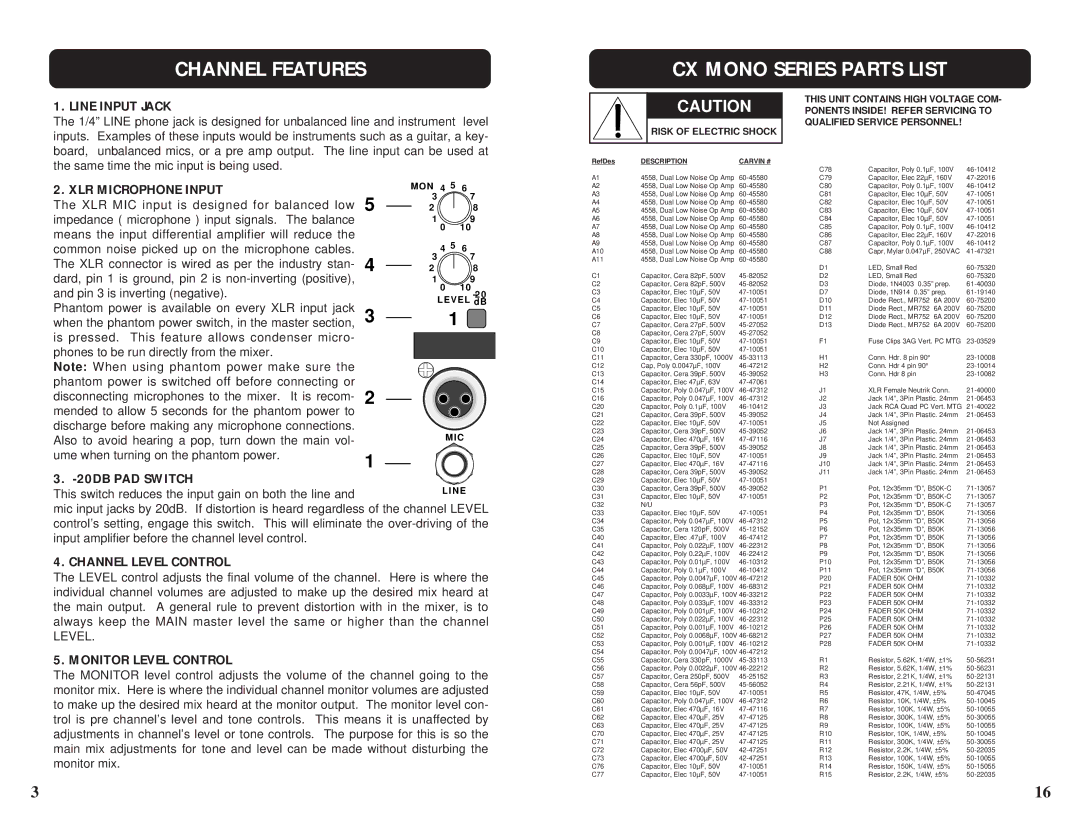CX420 specifications
The Carvin CX420 is a remarkable piece of audio technology tailored for both professional musicians and sound engineers who demand high-quality performance. Known for its versatility and exceptional sound clarity, the CX420 has garnered a reputation as a reliable tool in live performance and studio settings alike.At the heart of the CX420 is its four-channel design, allowing for multiple inputs and the ability to mix different audio signals seamlessly. This feature is particularly beneficial for live band performances or recording sessions where various instruments and vocals need to be balanced correctly. Each channel is equipped with individual volume and EQ controls, giving users precise control over tone and timbre.
One of the standout technologies in the CX420 is its built-in effects processor. The unit comes with a range of high-quality effects, including reverb, delay, and chorus, allowing musicians to enhance their sound without the need for additional outboard gear. This not only simplifies the setup but also reduces the overall cost for performers looking to produce professional-quality sound.
Another notable characteristic of the CX420 is its sturdy construction. Designed with durability in mind, this audio mixer features a rugged chassis that can withstand the rigors of touring and frequent use. The user-friendly layout ensures that musicians and technicians can quickly adjust settings on the fly, with ergonomically designed knobs and faders.
In terms of connectivity, the CX420 excels with its array of input and output options. It supports both XLR and TRS connections, making it compatible with a wide variety of microphones and instruments. The mixer also features auxiliary sends for external effects and monitors, providing flexibility in routing audio signals.
The Carvin CX420 is not only a mixer but also a tool that enhances creativity. With its exceptional sound quality, user-friendly design, and robust features, it allows musicians to focus on making music rather than getting bogged down in technical details. Whether on stage or in the studio, the CX420 stands out as an essential asset for sound professionals seeking a reliable and high-performing audio solution.

